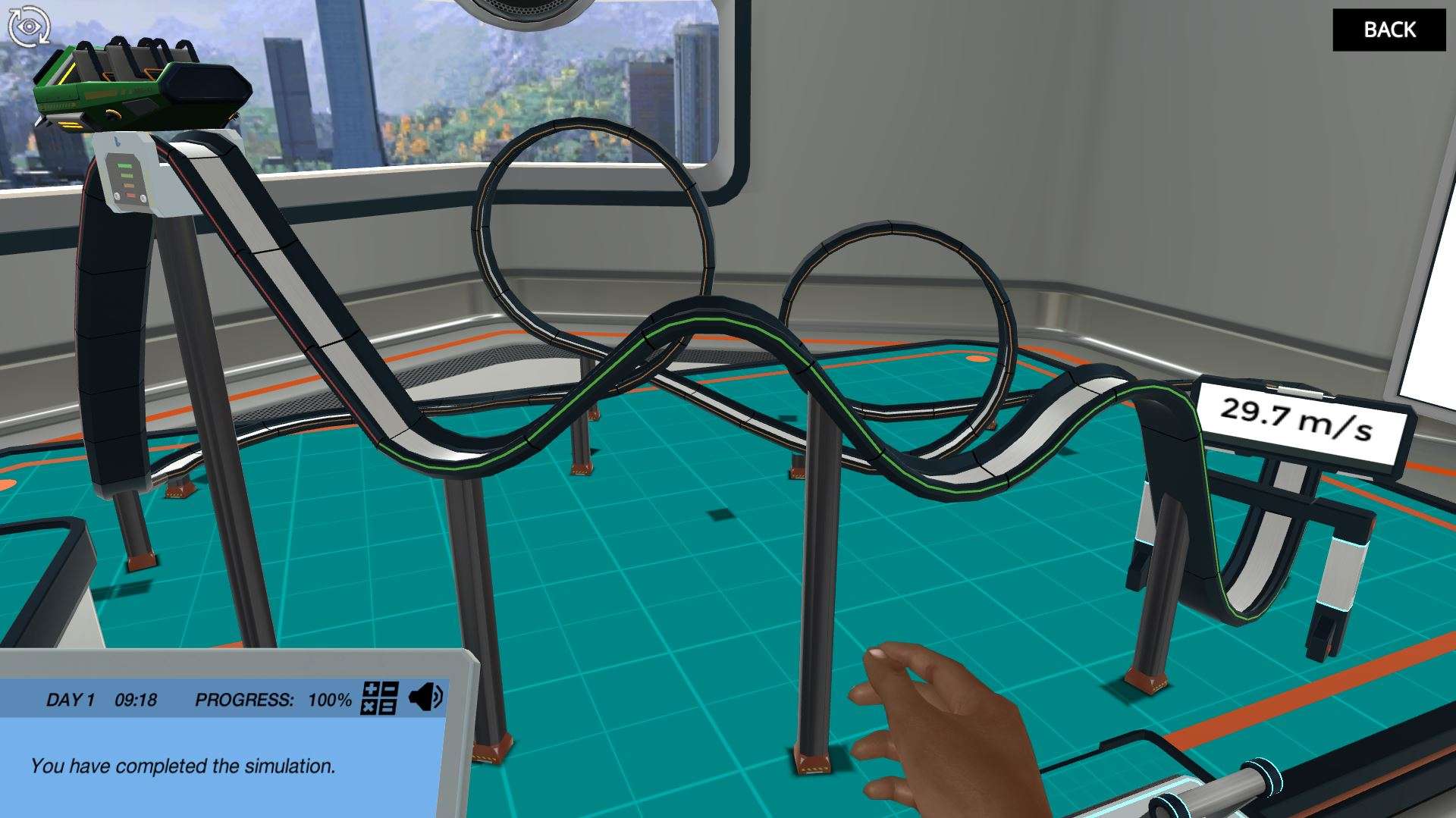Heading 1
Heading 2
Heading 3
Heading 4
Heading 5
Heading 6
Lorem ipsum dolor sit amet, consectetur adipiscing elit, sed do eiusmod tempor incididunt ut labore et dolore magna aliqua. Ut enim ad minim veniam, quis nostrud exercitation ullamco laboris nisi ut aliquip ex ea commodo consequat. Duis aute irure dolor in reprehenderit in voluptate velit esse cillum dolore eu fugiat nulla pariatur.
Block quote
Ordered list
- Item 1
- Item 2
- Item 3
Unordered list
- Item A
- Item B
- Item C
Bold text
Emphasis
Superscript
Subscript
About This Simulation
Apply the concept of conservation of energy to make the Labster roller coaster ride faster and more exciting. Calculate potential, kinetic and mechanical energy using the formula board to determine how to best improve the roller coaster track.
Learning Objectives
- Define the mechanical energy of an isolated system
- Separate conservative from nonconservative forces
- Define the mechanical energy of a body
- Explain the conservation of mechanical energy
- Apply conservation of energy to describe the movement of a body
- Use the equations for kinetic and potential energy, related to velocity and displacement
- Identify sources of energy and energy transformation
About This Simulation
Lab Techniques
- Manipulate formulae for potential, kinetic and mechanical energy
Related Standards
- 4.1 Open and Closed Systems: Energy
- 4.2 Work and Mechanical Energy
- 4.3 Conservation of Energy, the Work-Energy Principle, and Power
- 2.3 Work, energy and power
Learn More About This Simulation
What does it take to make a roller coaster go 100 km/h? In this simulation, you will learn how manipulating the mass, height, and velocity of a roller coaster affect its overall potential energy and kinetic energy. You will apply the concept of conservation of energy to calculate the mechanical energy of the roller coaster at different positions.
Design a new roller coaster
First, familiarize yourself with the components of the equations for potential and kinetic energy. Next, experiment using different masses of vehicles at different starting positions to discover the effect of mass and height on potential energy, velocity and kinetic energy. Finally, understand how energy transformation can be applied to the calculation of mechanical energy and use this information to design the fastest, most exciting roller coaster.
Calculate potential, kinetic and mechanical energy
Students will become comfortable with the components of the formulae for potential and kinetic energy and how these components are related to joules. By measuring energy in joules and converting from one type to another, students will discover how energy remains constant in an isolated system. Students will have the freedom to experiment with different masses of vehicles at each height to determine which combination fits their initial potential energy desire. Pulling the lever releases the rollercoaster and tracks the velocity, which can then be used to calculate the kinetic and mechanical energy.
Make the ride go 100 km/h
Choose the best vehicle and starting position then change the track by adding loops, dips and even an electric motor. Can you reach 100 km/h?
Boost STEM Pass Rates
Boost Learning with Fun
75% of students show high engagement and improved grades with Labster
Discover Simulations That Match Your Syllabus
Easily bolster your learning objectives with relevant, interactive content
Place Students in the Shoes of Real Scientists
Practice a lab procedure or visualize theory through narrative-driven scenarios


For Science Programs Providing a Learning Advantage
FAQs
Find answers to frequently asked questions.
Heading 1
Heading 2
Heading 3
Heading 4
Heading 5
Heading 6
Lorem ipsum dolor sit amet, consectetur adipiscing elit, sed do eiusmod tempor incididunt ut labore et dolore magna aliqua. Ut enim ad minim veniam, quis nostrud exercitation ullamco laboris nisi ut aliquip ex ea commodo consequat. Duis aute irure dolor in reprehenderit in voluptate velit esse cillum dolore eu fugiat nulla pariatur.
Block quote
Ordered list
- Item 1
- Item 2
- Item 3
Unordered list
- Item A
- Item B
- Item C
Bold text
Emphasis
Superscript
Subscript
Labster can be integrated within a school's LMS (Learning Management System), and students can access it like any other assignment in their LMS. If your Institution does not choose an LMS integration, students will log in to Labster's Course Manager once they have an account created. Your institution will decide the access method during the sales process.
Labster is available for purchase by instructors, faculty, and administrators at education institutions. Purchasing our starter package, Labster Explorer, can be done using a credit card if you are located in the USA, Canada, or Mexico. If you are outside of North America or are choosing a higher plan, please speak with a Labster sales representative. Compare plans.
Labster simulations are created by real scientists and designed with unparalleled interactivity. Unlike point and click competitors, Labster simulations immerse students and encourage mastery through active learning.
Labster supports a wide range of courses at the high school and university level across fields in biology, chemistry and physics. Some simulations mimic lab procedures with high fidelity to train foundational skills, while others are meant to bring theory to life through interactive scenarios.












.png?fm=jpg&w=450&h=400)





